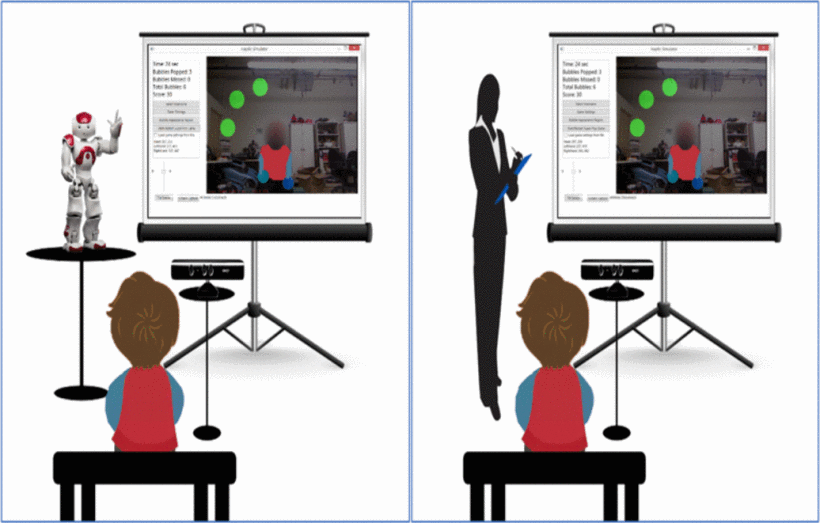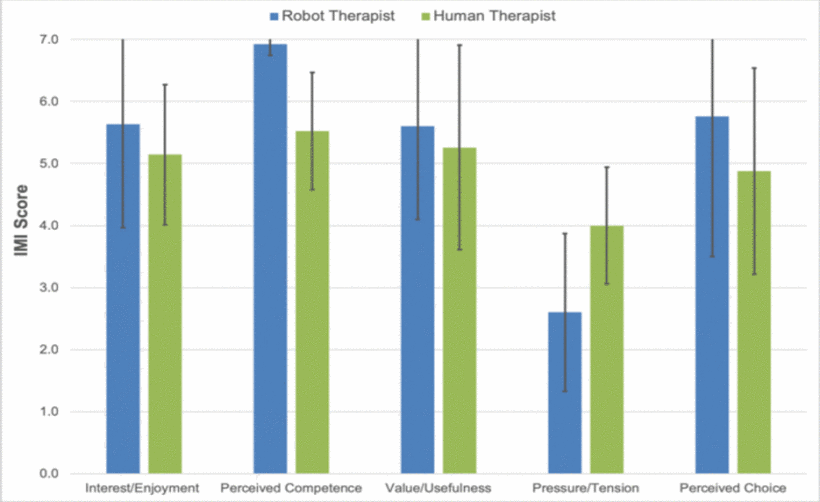While numerous studies have been performed in recent years to evaluate the effectiveness of interactive robots in rehabilitative therapy exercises, very few have compared the performance of a robot physical therapist with a human one – especially for therapists working with children.
To provide further insight into which type of therapist may be more effective, a team from the Georgia Institute of Technology and Georgia State University conducted a study with 10 children who interacted with either a robot or human therapist while playing a virtual reality (VR) rehabilitation game.
“The VR game used in the study, SuperPop, had previously been used to help improve arm mobility in children diagnosed with Cerebral Palsy. It was developed in conjunction with a licensed physical therapist and uses a humanoid robot to assess users’ progress and provide corrective feedback,” said lead author De'Aira G. Bryant, Georgia Institute of Technology.
In the game, a camera tracks the users’ movements as they try to pop virtual “bubbles” displayed on a screen. The robot receives input from the SuperPop system and provides corresponding feedback when appropriate. A representation of the study using both a robot and human therapist can be seen below in Figure 1.

Figure 1: Experimental Setup for SuperPop VR System
The study included 10 children (7 boys, 3 girls) between the ages of 4-8, with half the group receiving corrective feedback from a robot therapist and the other half receiving corrective feedback from a human therapist. For consistency, the robot and human therapists provided identical feedback. The interactions consisted of a nine-game sequence, which featured a warmup phase, baseline phase, acquisition phase, and extinction phase. Each child was observed for roughly 30 minutes and was asked to answer questions about their experience using an intrinsic motivation inventory (IMI) survey when they were finished.
Before the study, the team hypothesized that children who interacted with the robot therapist would find the game more engaging. It turns out they were right. While no significant differences were found in the IMI scores between the groups, a noticeable trend appeared – participants rated the robot therapist higher in each subscale of the survey. Even more interesting is that the perceived competence for the robot was higher than the human, implying children might have more trust in the robot therapist. The full set of IMI scores can be seen below in Figure 2.

Figure 2: IMI Survey Results
While this is merely one study, which is still ongoing, preliminary results show that children may be more interested in interacting with a robot therapist than a human one, as they reported a higher level of enjoyment, and a lower level of pressure and tension. A comparative study with adult participants found similar scores, with adults also believing the robot showed more competence. These results could support the development of future rehabilitation systems for children.
“There is a large potential for different aspects of engineering and computer science to positively impact traditional rehabilitation practices,” Prof. Bryant said. “Research in this field could improve the lives of many people around the world. By collaborating with a physical therapist, we were able to create a system that automatically analyzes an attribute of movement that is traditionally observed by the PT. Such collaborations are critical for new scientific discovery, and engineers possess many of the skills to drive such innovation forward.”
For more information on robotics, visit the IEEE Xplore Digital Library.





